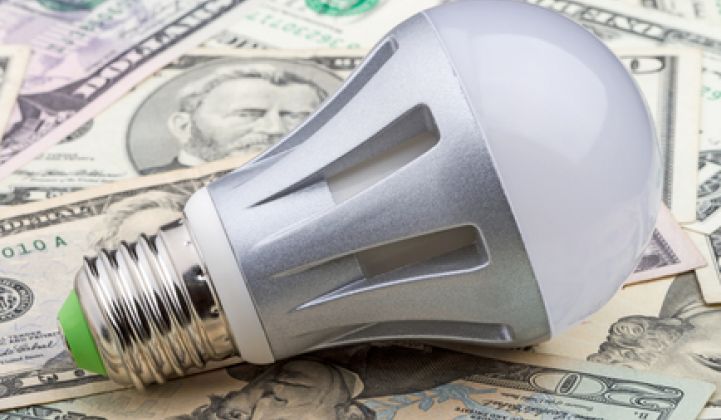LEDs are sparking a revolution in the lighting industry -- and for good reason.
LEDs have been on a promising trajectory in recent years. We now see them starting to push out traditional technologies in a broad range of sectors, including automotive, streetlights and decorative lighting. In 2010, LEDs represented just 0.3 percent of the lighting industry’s market share. Today, they’ve skyrocketed to approximately 18 percent and are expected to flourish further in coming years.
We’ve certainly come a long way, but there is still a long road ahead. To make better-informed decisions on how to accelerate mass adoption, it makes sense to look at another newcomer in the energy industry: solar power.
Less than a decade ago, solar energy technologies were at the far left side of the adoption bell curve. No longer reserved for affluent, eco-minded customers, the technology has proliferated across the U.S. and is now commonplace among a wide variety of residential and commercial customers alike.
According to GTM Research and the Solar Energy Industries Association (SEIA), the United States achieved a solar milestone when it surpassed 20 gigawatts of operational solar photovoltaic (PV) capacity just this year.
We now see that many of the same factors driving the success of the solar industry can potentially contribute to a healthy future for the LED industry as well. To expedite the LED industry’s journey to mass adoption, LED industry professionals should take note from the lessons learned by successful solar companies.
So, how did they do it? Let’s take a look back at the recent history of solar to apply best practices and avoid some of the industry’s early pitfalls.
Cutting costs
The greatest barrier still holding back LEDs from officially booting out incandescent bulbs is cost. Sound familiar? The solar industry has dedicated years to R&D to bring more mature technologies to market, while also expanding manufacturing lines to improve economies of scale. As a result, the industry has slashed panel costs by an impressive 75 percent in recent years.
At the same time, it’s important to keep in mind the challenges of solar’s “race to the bottom,” where some manufacturers prioritized ultra-low pricing over product quality. To compete in the lighting market, top-tier LED suppliers should look to reduce manufacturing costs without sacrificing product quality.
Additionally, the retail price for LED bulbs can be high because of multiple markups in the sales channels. LED professionals will have to learn from solar companies how to work with their sales channels and reduce costs so that distributors and end customers can meet specified energy-savings needs without breaking their budgets.
Educating on financial incentives
The explosion of the solar industry in the U.S. is also due in large part to the passing of financial incentives at the federal, state and regional levels. Since the federal solar Investment Tax Credit (ITC) came to life in 2006, the residential and commercial markets have achieved a compound annual growth rate of 76 percent. Similarly, the 2007 launch of the California Solar Initiative propelled the state to the top of the solar-adoption rankings; nearly a decade later, it’s showing no signs of being dethroned anytime soon.
The LED industry has an array of tax credits and rebates available as well, with most states providing incentive programs to help offset upfront costs. LED companies should look to stay informed on how end users can benefit from these policies, which can vary drastically depending on location. Educating consumers on the economic benefits of LEDs can help turn a “maybe” into an “absolutely.”
Safety first
Adherence to safety, quality and product performance standards has been critical to the solar industry. For LED companies to thrive, they will need to follow the same high standards of solar companies that have put a premium on safety and quality in their products.
Looking at the remarkable trajectory that the solar industry has achieved so far, it’s not difficult to imagine the LED industry following suit. By taking note of the practices that successful solar companies have implemented to thrive in their market, LED professionals can stay ahead of the competition and build this industry into the powerhouse that it has the potential to become.
***
Jessica Super is president of ReneSola America, a technology provider of energy-efficient products.



